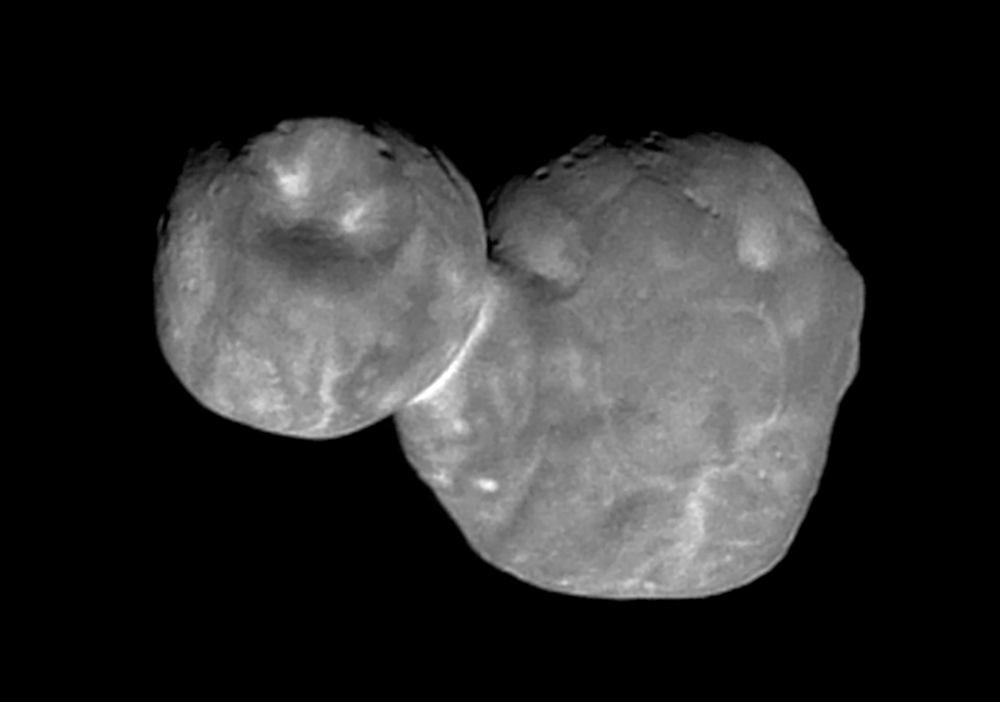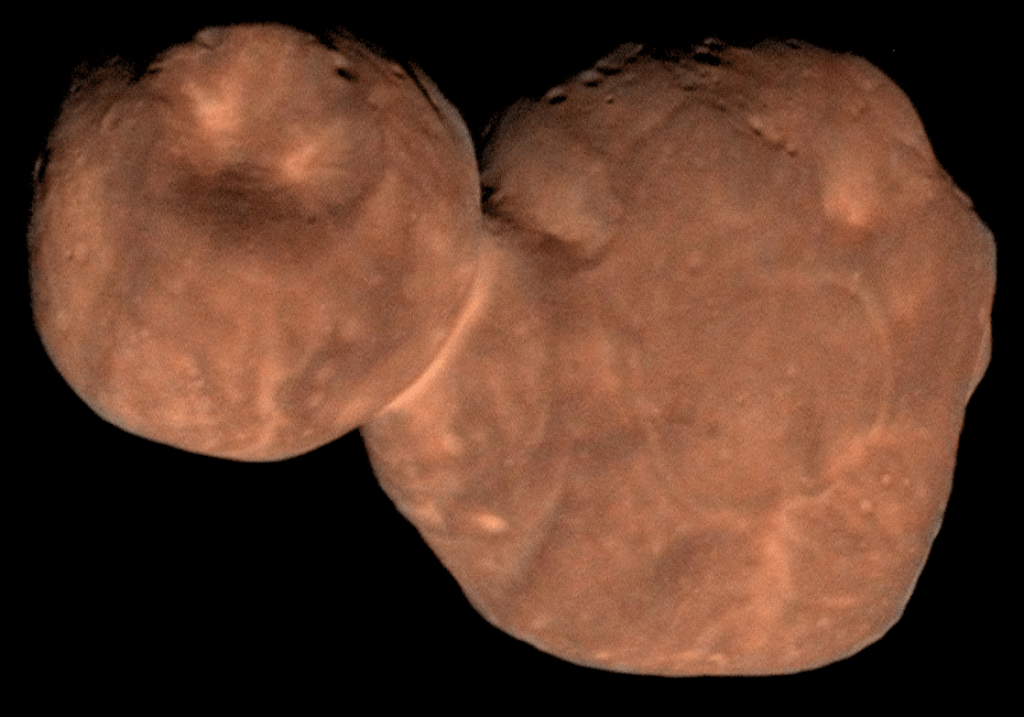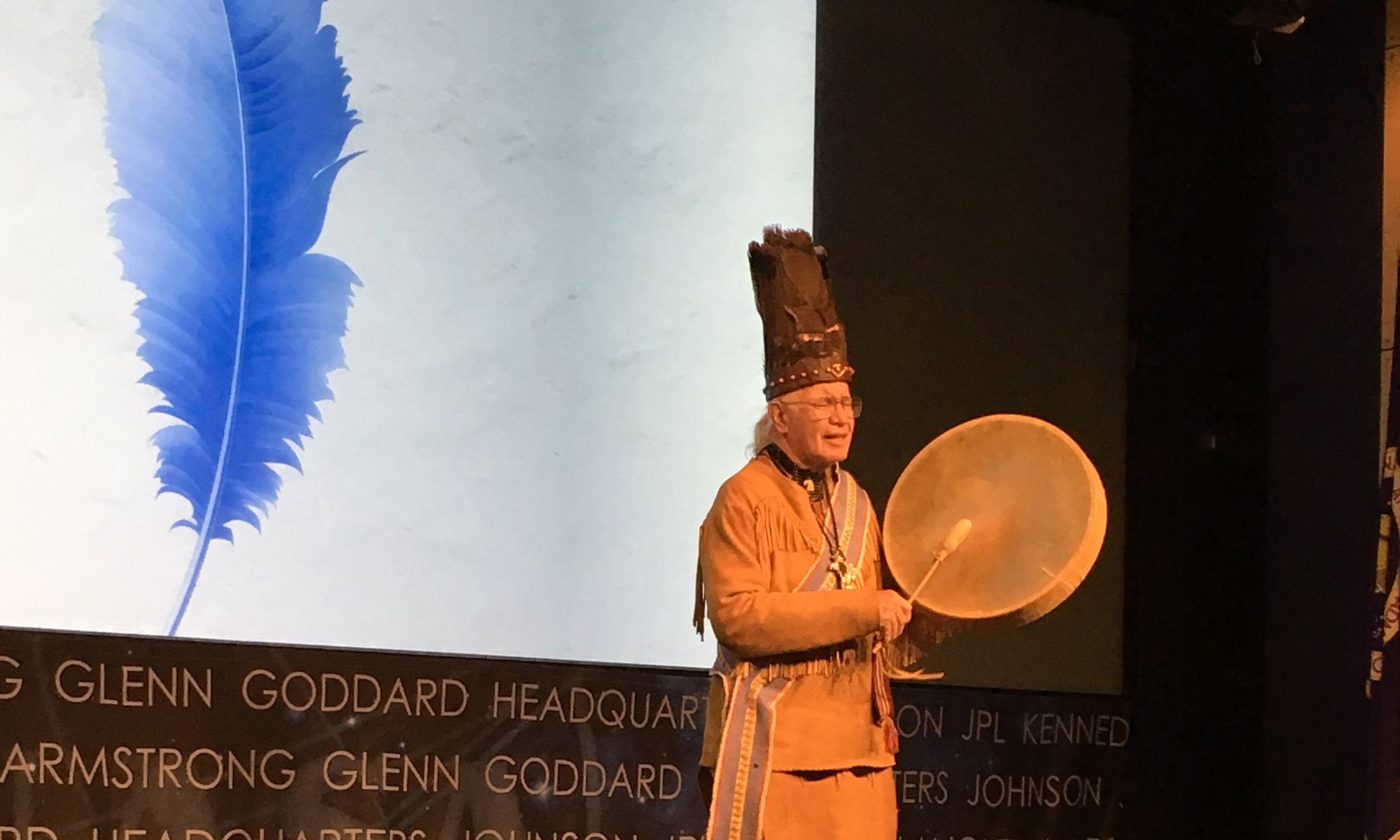On July 14th, 2015, the New Horizons made the first-ever flyby of Pluto. As if that wasn’t enough, the mission made history again with the flyby of the Kuiper Belt Object (KBO) 2014 MU69 on December 31st, 2018. This constituted the farthest encounter from Earth with a celestial object, which the team had nicknamed Ultima Thule – a mythical northern island beyond the borders of the known world in Medieval literature.
Unfortunately, this name has generated some controversy due to the fact that it is also the name white supremacists use to refer to a mythical homeland. So with the consent of the tribal elders and representatives of the Powhatan nations, the New Horizons’ team recommended a new name for the KBO. Henceforth, it will be known as “Arrokoth“, the word for “sky” in the Powhatan/Algonquian language.
The Powhatan Confederacy, a coalition of Algonquin-speaking nations, has resided in eastern Virginia and Maryland since time immemorial. Today, members of the nations reside all across the eastern seaboard while many live on the Pamunkey Reservation (located in King William County, Virginia). This reservation is the oldest in the US, established by treaty with England in the 1600s and receiving federal recognition in 2015.

The name was submitted by the New Horizons team to the International Astronomical Union (IAU) and the Minor Planet Center – the international body that is responsible for naming objects in the Kuiper Belt. It was then announced at a ceremony that took place on Tuesday, Nov. 12th, at NASA Headquarters in Washington, D.C.
The ceremony was officiated by Rev. Nick Miles of the Pamunkey Tribe who performed traditional Algonquian song to celebrate the decision. Alan Stern, New Horizons’ principal investigator from Southwest Research Institute (SwRI), explained the significance of the new name during the course of the ceremony:
“The name ‘Arrokoth’ reflects the inspiration of looking to the skies, and wondering about the stars and worlds beyond our own. That desire to learn is at the heart of the New Horizons mission, and we’re honored to join with the Powhatan community and people of Maryland in this celebration of discovery.”
Arrokoth is one of the thousands of small icy bodies in the Kuiper Belt, a massive population of objects that are essentially leftover material from the formation of the Solar System. Much like the Main Asteroid Belt, it is also home to several larger bodies, such as Pluto and Charon. Since the new millennium, many more have been discovered, like Eris, Haumea, Makemake, 2007 OR10, Quaoar, and others.

After making its historic flyby of Pluto, the New Horizons team decided to carry on with the mission and rendezvous with a Kuiper Belt Object. Already, the team had discovered 2014 MU69 using data from the Hubble Space Telescope (HST). By 2015, the object was selected as one of two potential destinations for the mission and was picked because it presented incredible research opportunities and would take less fuel to reach.
Marc Buie of the Southwest Research Institute (and a member of the New Horizons team) was partly responsible for the discovery of the object. As he explained:
“Data from the newly-named Arrokoth, has given us clues about the formation of planets and our cosmic origins. We believe this ancient body, composed of two distinct lobes that merged into one entity, may harbor answers that contribute to our understanding of the origin of life on Earth.”
As is customary with the IAU’s naming conventions, the right to select a permanent name for a cosmological object goes to the discovery team. Faced with the need to find an official name (preferably one that was not controversial), the team consulted the mythological and folklore traditions of the indigenous peoples who lived in the region where the object was discovered.
Since both the Space Telescope Science Institute (STSI), which is responsible for the HST, and the John Hopkins Applied Physics Laboratory (JHUAPL) – which is responsible for the New Horizons mission – are located in Maryland, the decision to adopt a name from the region’s indigenous peoples’ was entirely appropriate.

The selection of the name is also significant for the Powhatan language, which has been largely extinct since the 18th century. As Lori Glaze, director of NASA’s Planetary Science Division, declared in the course of the ceremony:
“We graciously accept this gift from the Powhatan people. Bestowing the name Arrokoth signifies the strength and endurance of the indigenous Algonquian people of the Chesapeake region. Their heritage continues to be a guiding light for all who search for meaning and understanding of the origins of the universe and the celestial connection of humanity.”
The name was accepted by the IAU’s Minor Planet Center on November 8th, 2019, and was published in a Minor Planet Circular on November 12th, 2019. Until such time as the New Horizons mission rendezvous’ with another KBO, Arrokoth will remain the most distant object ever studied by a robotic spacecraft. In this respect, the name is especially appropriate since it resides at the very edge of human exploration.
Further Reading: JHUAPL

